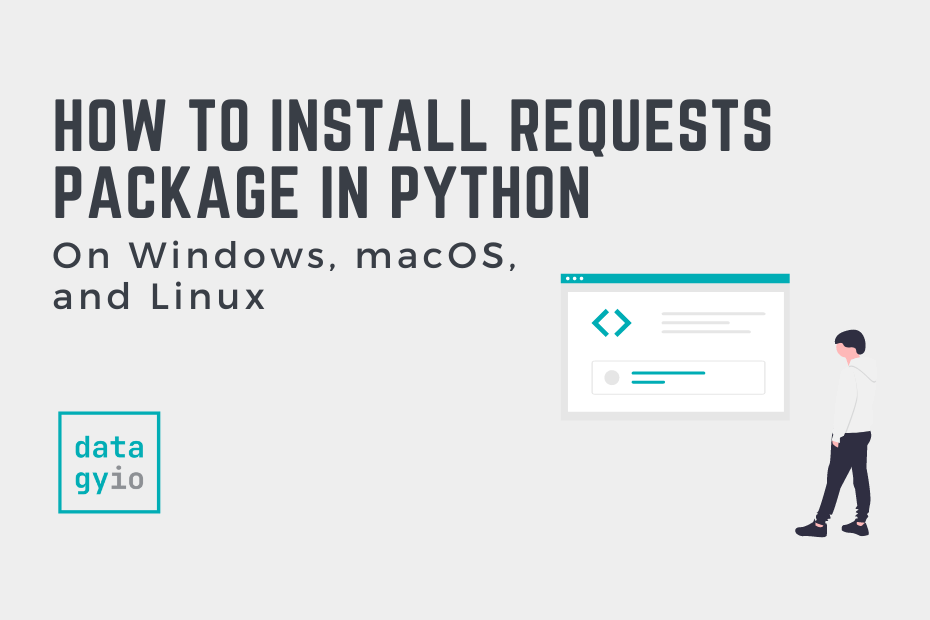In this tutorial, you’ll learn how to install the popular requests package in Python, including on Windows, macOS, and Linux. The requests library is a popular HTTP library that can handle generating different types of requests, including GET, POST, and PUT requests. The library is available for Python 3 from the Python Package Index (PyPI).
By the end of this tutorial, you’ll have learned:
- How to install the requests library in Python for Windows, macOS, and Linux using the
pippackage manager - How to install the
requestslibrary using a Virtual Environment and a requirements.txt file - How to install
requestsfrom Github
Table of Contents
What is the Python requests Library?
The Python requests library is a Python library that handles making HTTP requests. The library is well known for being simple and elegant, by abstracting away much of the complexity of working with HTTP requests. The library is also one of the more popular libraries available in Python: it currently draws around 30,000,000 downloads per week and is in use by over 1,000,000 repositories on Github.
How to Install requests on Windows Using pip
The simplest way to install the requests library on Windows is to use the Python pip package manager. In order to install the latest version of the library, you can simply call the following command in the command prompt:
python -m pip install requestsTo install a specific version of the library, such as version 2.28.1, you can write the following command:
python -m pip install requests==2.28.1It’s as easy as that! In the following section, you’ll learn how to install the requests library on macOS using the pip package manager.
How to Install requests on macOS Using pip
Similar to the Windows method, the simplest way to install the requests library on macOS is by using the pip package manager. On macOS, this is done by using the Terminal application. When in the Terminal application, simply run the following command:
pip install requestsSimilar to installing a specific version on Windows, to install a specific version of the library, such as version 2.28.1, you can write the following command:
pip install requests==2.28.1In the following section, you’ll learn how to install the requests library on Linux.
How to Install requests on Linux Using pip
To install the requests library using the pip package manager on Linux, you can use the terminal application. When the application is open, you can run the following command:
pip install requestsSimilar to the above example, to install a specific version of the library, such as version 2.28.1, you can write the following command:
pip install requests==2.28.1In the following section, you’ll learn how to install the requests library in a virtual environment.
How to Install requests in a Virtual Environment
Using a virtual environment is a good idea for many reasons. For one, it allows you to better understand what versions of libraries you’re using. Additionally, it allows you to keep a cleaner development environment.
Installing the requests library in a virtual environment works the same as the methods above, though we first have to create and activate the virtual environment. You can create and activate the environment on Windows using the method below:
python -m venv venv
.\venv\Scripts\activateOn macOS, you can write the following:
virtualenv venv
source venv/bin/activateOnce the environment has been created, you can use any of the pip methods shown above to install the requests library. This is summarized in the code block below:
# On Windows:
python -m pip install requests
# On macOS or Linux
pip install requestsIn the following section, you’ll learn how to install the library using a requirements.txt file.
How to Install requests With requirements.txt
Using a requirements.txt file is particularly helpful when sharing your code with others via source code management tools, such as Github. The file provides the ability to easily track and identify the packages that you use in a project.
In order to use the requirements.txt file to install the requests library, you can insert a file name requirements.txt to the root folder of your project. In the file, include a line containing requests.
From there, you can use the pip package manager to install all libraries listed in the file. This can be done using the following command:
pip install -r requirements.txtIn the final section below, you’ll learn how to install the requests library directly from Github source code.
How to Install requests from Github
If you have Git installed, you can install the requests library directly from the source code. This allows you to install the library from its code directly.
In order to do that, you can use the pip package manager, though you pass in the URL to the source code directly.
pip install github.com/kennethreitz/requests.gitDoing this can help you feel confident that the code you’re installing is the code you want to use.
Conclusion
In this tutorial, you learned how to install the requests library on Windows, macOS, and Linux. You first learned how to install the library using the pip package manager. Then, you learned how to install the library in a virtual environment. Finally, you learned how to install the library using a requirements.txt file as well as directly from Github.
Additional Resources
To learn more about related topics, check out the tutorials below:

